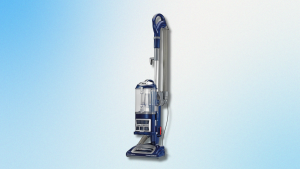
Here’s what’s exciting food tech investors in 2025
Quick bitesThe global food tech market is booming, with 9.9% growth expected by 2030Investors want scalable, cost-cutting solutions that move fast from lab to marketAI and biotech are hot, powering smarter supply chains, novel ingredients, and efficiency gainsCircular models and sustainable tech that turn waste into value are high on the radarThe food tech market is massive, and it’s still growing rapidly. Globally, it was valued at $172bn in 2022, and is expected to expand at a not-to-be-sniffed-at 9.9% until 2030 (Grand View Research).
Why so high? Well, food tech solutions are notoriously expensive to develop. When a new technology hits the market, the goal is to eventually recoup all the money that went into its development, and ideally, generate profit.
And where do start-ups get that money in the first place? They’ve got a few options: they can crowdfund, get grant funding, pursue debt financing, or for those with deep pockets and an insatiable risk appetite, bootstrap their way forward.
Another very popular option is to seek venture capital investment. Whether it’s for cultivated meat, precision fermentation-derived dairy, novel sugar reduction technology or food processing robots, the start-up ecosystem has a mutually beneficial relationship with investors. VC helps fund journeys from labs to market, and if that company succeeds, investors can win big.
Just like food trends come and go, so too do food tech trends. The hottest thing from two years ago may now be out of favour. So what food tech innovations are catching investors’ eye in 2025?
Digitalisation and AI-powered innovationIn a time where artificial intelligence is turning traditional industries upside down, it may come as no surprise that digitalisation and AI-powered innovation are on investors’ bucket lists.
The potential for technology to transform the industry – a “somewhat outdated space” – is “massive”, suggests Erich Sieber, founding general of venture capital firm PeakBridge. “Digitalisation is a big one. That ranges from using AI to smart robotics to improve supply chain efficiency, to cutting food waste and helping food giants innovate faster.”
Great effort is already going into these areas, with food makers leaning into AI to speed up new product development, enhance food quality, and even to upskill employees.
AI can do so much, from helping to identify novel proteins to cutting food waste. (Image: Getty/MF3d)AI can also be leveraged in the development of new ingredients, explains Shivani Oberoi, principal at Synthesis Capital. “We’re actively exploring companies that are developing novel proteins and enzymes that address specific functional or industrial challenges.” Many of these advances are being driven by proprietary datasets and the application of generative AI, she continues, “opening up a wide range of use cases both within food and beyond”.
Sustainable ingredients driven by biotechnologyThe AI revolution is becoming increasingly obvious to all in the business world. But there’s another type of revolution is unfolding more quietly.
That’s what Louise Heiberg, partner at Nordic Foodtech VC, calls the “invisible revolution” of “biosolutions”. Technologies that fall under this umbrella include precision fermentation, novel microbes, enzymes, and bio-based processes.
“They all make our food systems healthier, tastier, more nutritious and more sustainable, all while quietly working behind the scenes,” explains Heiberg. “They are like the orchestra playing backstage that makes the star shine.”
It’s not just VC backing this cohort of biosolution-based technologies. Ingredients supplier Novonesis estimates that biosolutions could generate €133bn in economic gains by 2035, while saving €55bn in environmental costs.
New solutions in this space need to have “great biomanufacturability”, stresses the Nordic Foodtech VC partner. “They should be scalable, efficient, and robust enough to move from lab to large-scale production without losing their magic.”
Technologies like precision fermentation and novel microbes quietly work behind the scenes. They are like the orchestra playing backstage that make the star shine
Louise Heiberg, partner at Nordic Foodtech VCSustainable ingredients aren’t only the product of biotechnology, and upcycling is also on Nordic Foodtech VC’s radar, although Heiberg uses the term “circularity” – whereby technologies turn side streams and waste into high-value ingredients. “It’s about building a resilient, resource-efficient food system.”
Enabling technologies for industryOthers are keeping a close eye on B2B enabling technologies that leverage ‘deep tech’, a term that covers any technology using AI, robotics, blockchain, biotech and quantum computing. Importantly, deep tech solutions don’t directly cater to the end-user, or consumer.
Deep tech food tech solutions, like robotics, are on food investors’ bucket lists. (Image: Getty/Eloi_Omella)“As technology investors, we’re interested in deep tech solutions that are shaping the future of food production,” explains Synthesis Capital’s Oberoi. The VC firm is “especially excited” about enabling technologies that drive down the production costs of alternative foods and other bio-based products. They serve to accelerate commercialisation timelines and “propel” broader consumer adoption, she explains.
“Key areas of innovation include bioprocess optimisation, capex-light bioreactor design, and the retrofitting of legacy manufacturing infrastructure to expand production capacity without heavy capital outlay.”
Want to know more about the future of food?Join a global community of innovators, investors, and industry leaders as they explore what’s next in food tech at Future Food Tech-London 24-25 September 2025.
From cutting-edge start-ups to powerhouse FMCGs, hear firsthand how the future of food is being built – today.
The winner of the Global Food Tech Awards – EMEA heat will also be announced live on stage. Not one to miss!











